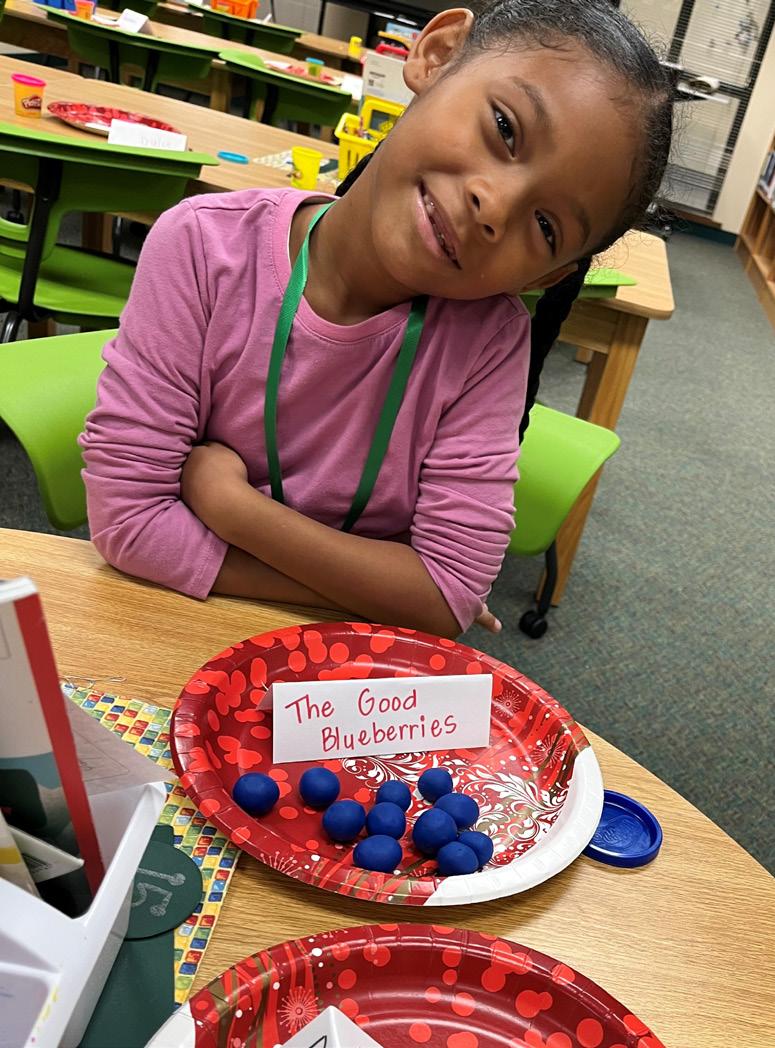
5 minute read
Cultivating Creativity in the Library
By Robin Overby Cox
OVER-STIMULATED, OVER-SCHEDULED, AND OVER-PRESSURED TO PERFORM, today’s young readers are struggling with how to access the source of the best stories in the world–those found in their own imaginations. As a librarian, I’ve observed such a decline over the last 20 years in the way our readers share and demonstrate their ability to dream, imagine, and picture the content of the stories they hear, read or write. You could catch yesterday’s reader gazing and daydreaming during their reading activities. Today’s reader gravitates to graphic novels or screen-based media where someone else does the dreaming, imagining, and picturing of stories. We probably all have something to say about creativity and the impact of social media and screen time on the way kids think, imagine, dream, and read. The big question is, can we do anything about it in our libraries?
There are several ways we can respond. We’re already tackling the need for kid-centered imaginative play in our libraries by offering Maker Space and creative Make-n-Take activities. The ability to offer children the opportunity to play in response to literature in an open-ended way stimulates creativity. All of our Maker Space activities can be linked to our library collections so children can see how reading about building a school, for example, based on Chris Van Dusen’s If I Built series, can be creatively dramatized in myriad ways using supplies like Keva planks, Lego blocks, Lincoln Logs, Magna-Tiles, etc. Setting up a storytelling platform for Ozobots creates an open-ended way to use technology as a tool rather than a toy. Planning Maker Space activities without suggesting literature and nonfiction accompaniments may represent a missed opportunity to link imaginative play with reading. Creating purposeful, screen-free activities in our Maker Space areas is essential. While we recognize there are many resources available online, kids love Maker Spaces precisely because they are in control of the what if’s and what happens next in hands-on and brains-on experiences. Curiosity might have killed the cat but it stimulates a child to imagine and create.
Next, we can offer fresh alternatives for engagement rather than passive responses to reading. Why play an online game about finding treasure when we can hunt through the library using a scavenger hunt to find treasures of our own? How about setting up scenes for pre-reading?

Robin’s first-grade students read The Good Egg, The Bad Seed, The Smart Cookie, and The Sour Grape by Jory John and she asked the students to imagine what the next book in the series might be if they were the author.
Before reading Susan Choi’s Camp Tiger, set up a tent, a few logs, and roast some marshmallows over a paper campfire. If you’re reading Allen Say’s Kamishibai Man, bring in an old bicycle and construct a kamishibai theater. Use rolls of white paper to create your own version of Dog Man-what if it’s Horse Man, or Kangaroo Man instead? Mac Barnett’s A Polar Bear in the Snow might elevate a child’s imagination if he reads it in an igloo made of milk jugs. What happens to our reading experience when we read with a flashlight? Or a black light? Buy some germ powder and spread it around, then try reading Iden Ben-Barak’s Do Not Lick This Book. Follow Kevin Henkes’ Birds with a bird walk on the playground using homemade telescopes. Use Dianna Hutts Aston’s A Rock is Lively and decorate some rocks using your imagination. It’s all about building engagement and curiosity. These activities stimulate a child’s imagination, as we model what it looks like to think outside of the box, outside of the book. The ideas are so plentiful. Yes, these require time and preparation, but the rewards are impactful as children learn to dream, imagine, and create.
Finally, whatever happened to the Socratic question? If we formulate questions that create dialogue and thoughtful responses, we are building the dreamer, the wanderer, the wonderer.

Students used play dough and their imaginations to come up with new book titles in "The Good Egg" series.
High-stakes testing has all but eliminated the provocative answer, the thoughtful response. In our libraries we can ask the “What if” questions, the “What do you think” queries, the “How would you relate?” inquiries, so our readers are thinking more about thinking. If we probe viewpoints, probe opinions, probe causes and effects, probe evidence, we are teaching our students to dig deeper and, in the process, we’re celebrating the rabbit hole seeker, the alternative examiner, the divergent dreamer. Technology, social media, online games, tablets and phones are not our enemies. But the child who sees technology as a tool to create his own game, the student who learns to form a friendship with his own imagination rather than strangers online, the reader who finds freedom in fantasy, is one who will change his world as well as our world for the better. If we’re to ignite creativity in our libraries, it’s through offering the best books and resources as well as providing engaging opportunities to play, to dream, and to create in response to reading. Einstein said, “Creativity is intelligence having fun.” Let’s create some fun in our libraries.
Robin’s first-grade students read The Good Egg, The Bad Seed, The Smart Cookie, and The Sour Grape by Jory John and she asked the students to imagine what the next book in the series might be if they were the author. They came up with some great ideas using Play-Doh, including “The Good Blueberries.”

The first-grade students came up with some great ideas for new book titles, including “The Good Blueberries.”
Robin Overby Cox is a Library Media Specialist at Brenham Elementary School in Brenham, TX.








